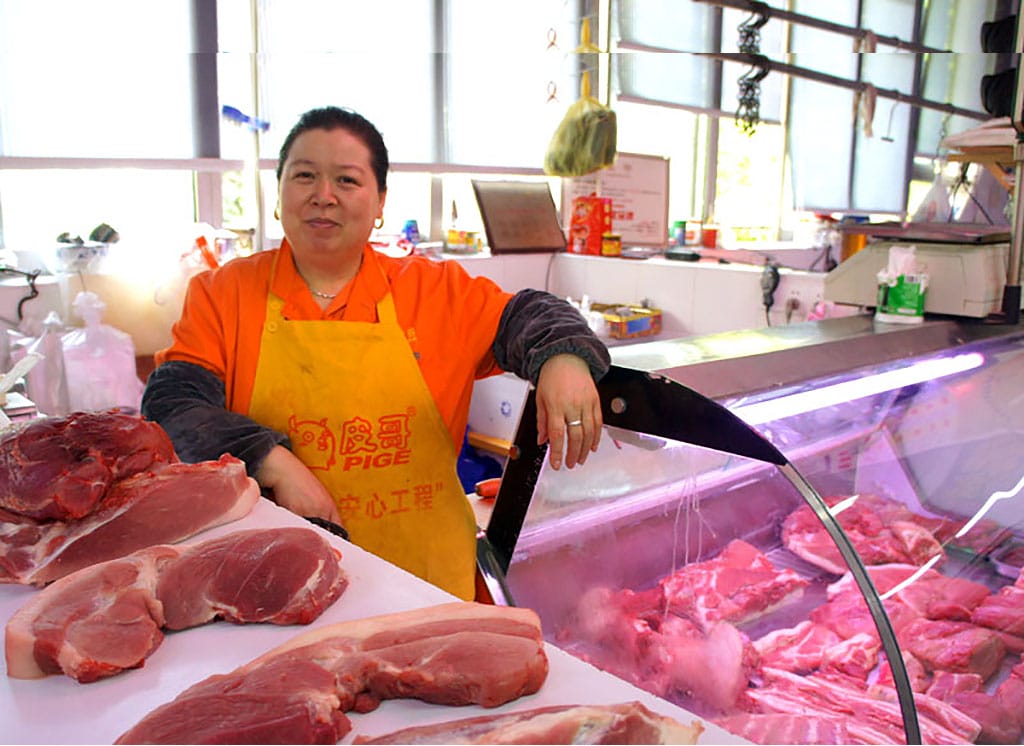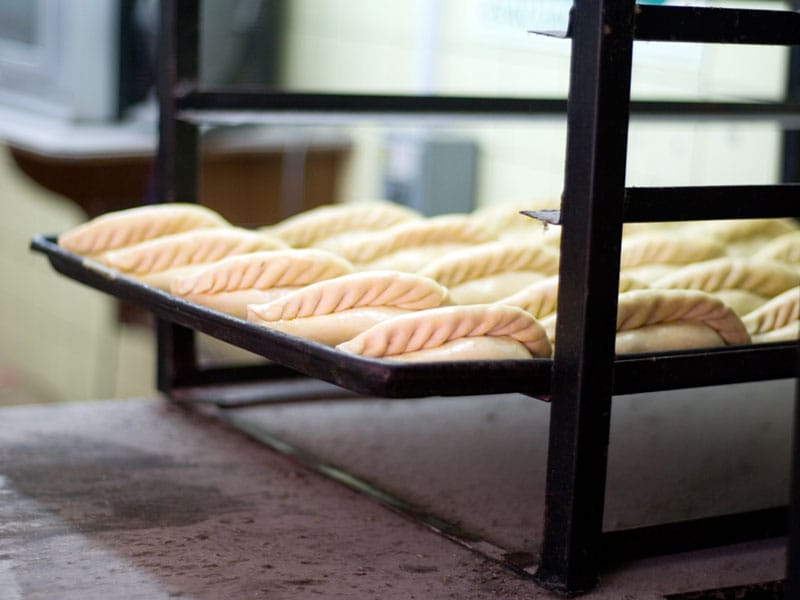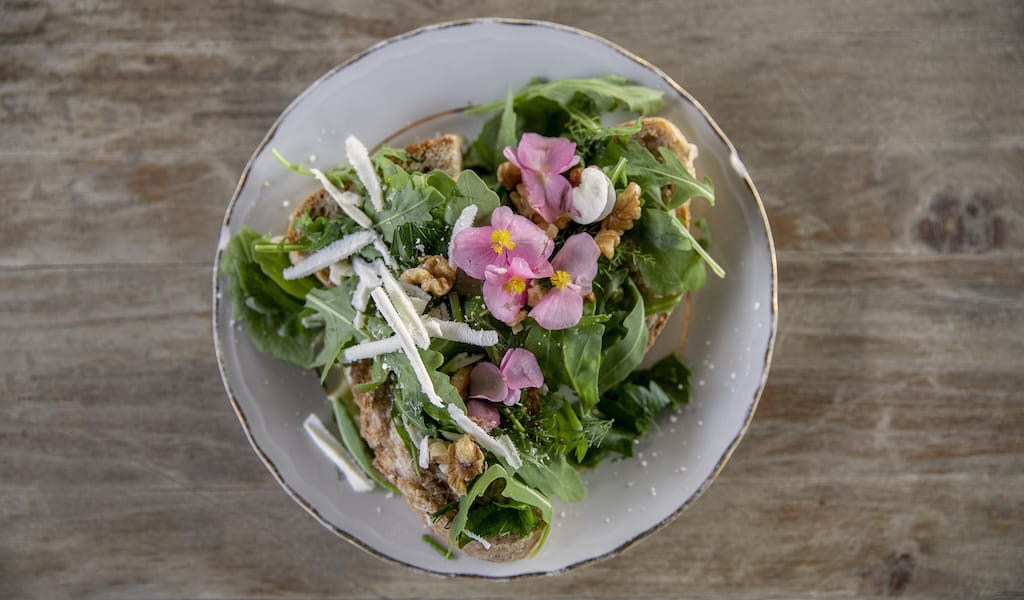Editor’s note: In light of the latest food safety scandals in China, we thought it was time to rerun our story on how to stay safe while eating adventurously in that country.
Dear Culinary Backstreets,
I’ve heard some horror stories about food safety scandals in China. How does an adventurous eater explore Shanghai without having any culinary misadventures?
There’s no hiding the fact that recent years have seen the highly publicized exposure of some unsavory information on China’s food safety record. While the headlines may not be any worse than those seen recently in other countries (whether unlabeled horse meat or fecal matter in ground turkey), the Chinese lately have reached appalling levels of creativity in their food scandals, from thousands of diseased pigs washing up in the Huangpu River, to rat, fox and mink meat being pawned off as lamb at hotpot restaurants. Top it all off with H7N9, a new strain of avian influenza affecting humans, and a visit to China might very well feel like a Fear Factor episode.
As curious eaters, we often find ourselves snacking on just about anything we come across in Shanghai, but there are some common-sense guidelines we make sure to follow in order to stay safe. Before you start packing a suitcase full of PowerBars for your time in China, here are a few handy tips that will help you enjoy the local food worry-free.
1) Check for reused oil
At streetside dumpling makers and noodle vendors, check the color of the oil being used. As they pour oil into the wok, make sure it is not cloudy and that there are no crispy bits floating in it – telltale signs of reused or recycled oil.
2) Choose roving street vendors carefully
With pushcart vendors, try to visit those whom you see setting up shop at the same spot on a regular basis, as their returning customers will hold them accountable. If you are new to the area or visiting, go where the most people are. You don’t want to be ordering kebabs from the lone vendor outside the train station with no customers in sight.
3) Time your meals
If you are eating in an unfamiliar place, stick to main mealtimes, so you know the size of the crowd and you can assess serving conditions and ensure quick turnover of food. Don’t eat food that has been precooked and has been sitting out for who knows how long. Half the fun of street food is watching them prepare it right in front of you, anyway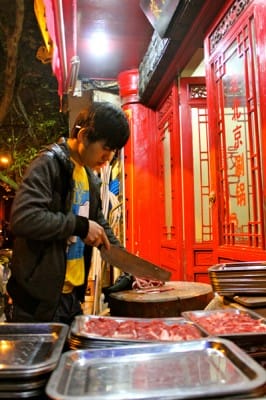 !
!
4) Open your eyes and your nose
Lamb and mutton have a distinct smell that can’t be properly faked, Chinese counterfeiting ingenuity be damned. It pays to really be curious and choose places that will at least let you peek into their kitchen, if not take photographs. While you may have previously turned your nose up at lamb being sliced in a restaurant entryway, as is the case at our favorite Beijing-style hotpot, Lao Beijing Shuan Guo, now it’s a clear indicator that there is no possible way another four-legged creature is masquerading as mutton. Open eyes and olfactory glands go a long way.
5) Avoid processed foods
While this may seem counterintuitive to some, anyone with the food scandal app (中国求生手册, “China’s Life-Saving Handbook,” only available in Chinese) knows that it’s usually the mass-produced brands and their highly processed foods that have the most horrific recalls. With food prices rising and constant profit pressures, even seemingly trusted brands can be found resorting to shady practices. Plus, after you try a bite of that oddly bright pink sausage, you’ll be happy to stick with what’s fresh.
6) Don’t rely on food safety ratings
Take Shanghai’s smiley/frowny face food safety ratings with a grain of MSG. Fast-food giants are able to get the green smiley face due to their corporatized and transparent supply chain, which does not necessarily correlate with kitchen hygiene standards. Our favorite noodle shops, such as Wei Xiang Zhai, will probably be eternally stuck in the yellow or red frowny face ratings due to their supplies coming in fresh every morning from local markets with minimal record-keeping taking place.
7) Prices can be too good to be true
Cringe when you hear the words “cheap sushi”? So do we. Just remember that these are food items you’re putting in your body, and while bottom-barrel prices might sound like a good deal, you might end up paying for them in other ways.
8) Don’t cut poultry out of your diet
H7N9 should be more alarming from an infectious disease point of view than from a food safety perspective. Since it was first discovered in late March 2013, to this writing fewer than 150 cases have been detected and all have affected either workers involved directly in the poultry trade or their families and close contacts. Human-to-human transmission has thus far been ruled out. With live bird markets closed in Shanghai, there seems to be little reason to fear serving 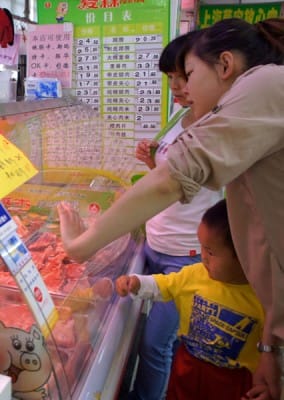 or eating poultry in an urban environment, and indeed, not much has changed. Roast duck shops are doing a brisk trade, and the recent May holiday saw equally long lines for Guang Ming Cun’s famed soy-sauce-braised duck (酱鸭, jiàngyā). Although live poultry is no longer sold at the Fuxing Lu Wet Market, there are still plenty of opportunities for snacking, including on twice-fried chicken strips (鸡排, jī pái).
or eating poultry in an urban environment, and indeed, not much has changed. Roast duck shops are doing a brisk trade, and the recent May holiday saw equally long lines for Guang Ming Cun’s famed soy-sauce-braised duck (酱鸭, jiàngyā). Although live poultry is no longer sold at the Fuxing Lu Wet Market, there are still plenty of opportunities for snacking, including on twice-fried chicken strips (鸡排, jī pái).
9) It’s getting better
In response to a populace increasingly up in arms over the tide of food scandals, the Chinese government has implemented some harsh penalties (including the death penalty!) on failing food regulators and business leaders alike. At his first press conference, incoming Premier Li Keqiang made the issue a priority. The new government is taking food safety very seriously, and has plans to consolidate the 13 disparate agencies that currently oversee food safety into a single watchdog similar to the FDA in the U.S. Furthermore, the fact that so many food safety scandals have made headline news lately – instead of being covered up by the government – indicates that there is political will to improve the situation. – Kyle Long and Jamie Barys
For our related advice column on food safety in Mexico City, click here.
This article was originally published on May 14, 2013.
 March 7, 2013 Pastes Real de Pachuca
March 7, 2013 Pastes Real de Pachuca
Update: This spot is sadly no longer open.
For weeks we had been passing by a small […] Posted in Mexico City December 15, 2014 Best Bites of 2014
December 15, 2014 Best Bites of 2014
Editor’s note: The year is coming to an end, which means it’s time for us to look back […] Posted in Mexico City April 28, 2022 CB On the Road
April 28, 2022 CB On the Road
In the tiny Italian town of Cuccaro Vetere, some 150 kilometers south of Naples, […] Posted in Naples
Published on July 31, 2014
Related stories
March 7, 2013
Mexico City | By Ben Herrera
Mexico CityUpdate: This spot is sadly no longer open. For weeks we had been passing by a small venue that filled the sidewalk with the heavenly scent of butter and pastry dough, before we finally had the chance to stop in and investigate. The source of the intoxicating aroma turned out to be Pastes Real de…
December 15, 2014
Mexico CityEditor’s note: The year is coming to an end, which means it’s time for us to look back on all the great eating experiences we had in 2014 and name our favorites among them. Tacos el Patán This hole-in-the-wall eatery is located in one of the busiest commercial sections of downtown Mexico City. We found…
April 28, 2022
Naples | By Alessio Paduano
NaplesIn the tiny Italian town of Cuccaro Vetere, some 150 kilometers south of Naples, villagers are surrounded by nature and an incredible variety of local fruits. The town, which is in Campania’s province of Salerno, has just over 500 inhabitants, and – even more than their nature’s bounty – these residents are known for one…







































